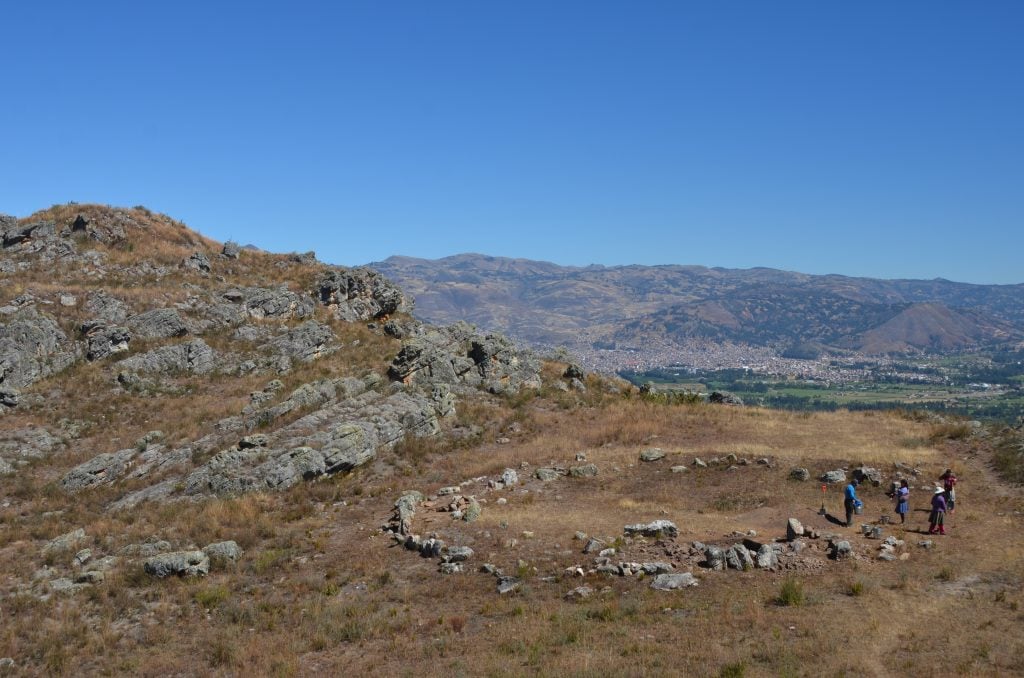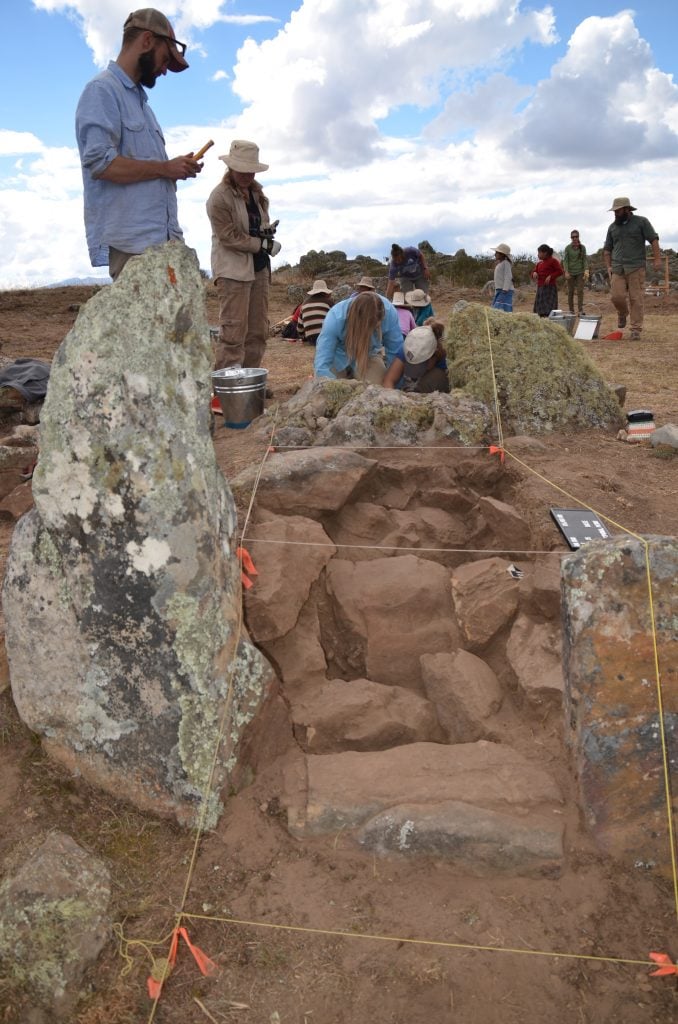Archaeology & History
A Monumental Stone Plaza Found in Peru Is Older Than the Pyramids of Giza
The structure represents one of the earliest examples of megalithic architecture in the Americas.

Anthologists working in the northern Peruvian Andes have excavated a circular stone plaza, cited as one of the earliest examples of monumental megalithic architecture in the Americas.
Dated back approximately 4,750 years, the plaza was uncovered in Callacpuma, a site in the Cajamarca Basin that has been the focus of archaeological research for the past six decades. It predates the great pyramids of Giza of Egypt by a century, making it concurrent with England’s Stonehenge.
The research is courtesy of two University of Wyoming anthropology professors, Jason Toohey and Melissa Murphy, who published their findings in Science Advances.
“This is a time period that we know very little about in the Cajamarca region,” Toohey said via email. “I am very interested in why people from a small-scale relatively mobile society would go to the trouble and labor to construct such a monument.”
The circular stone plaza measures 60 feet in diameter and is comprised of unworked stones that were taken from nearby bedrock and arranged vertically and close together. The plaza had two entryways, two or three interior rooms, and was bound by a low perimeter wall.

One of the plaza entrance’s onsite in Cajamarca. Photo courtesy Jason Toohey.
The plaza’s layout and the uncovered artifacts have led researchers to assert it served a ceremonial function. Access to the plaza’s interior was controlled with the placement of a large megalith, one that possibly blocked people from viewing the activities performed inside it.
Inside the interior rooms, which average 13-feet-squared, researchers have found ceramic and stone serving vessels—and no evidence of cooking or storage vessels—quartz crystals, a nodule of lapis lazuli, and pieces of worked anthracite believed to be fragments of a mirror.
In terms of how the structure came about, Toohey proposes two possible scenarios. An “aspiring person” could have led one or more groups to unite their efforts, or perhaps a something of collective mindset existed. “At a time when people were beginning to settle down, there might have been some desire to make a physical, material claim to local resources and lands,” Toohey said.
After first being identified in 2015, research at Callacpuma has been steadily investigated over the past decade. Excavation shows the builders dug to the bedrock and then laid a mixture of clay, soil, gravel, and charcoal on top to create a stable surface for the stones to stand on.
This excavation allowed researchers accurately date the plaza, first through radiocarbon-dating the charcoal, then through the lack of ceramic shards in the lower levels (regional ceramic production began around 1500 B.C.E). An additional clue is the perimeter wall, which is unlike any other found at Callacpuma.
The dating indicates the stone plaza was built by peoples who were at a transitional stage between hunter-gatherer and sedentary. Monumental architecture—prominent examples of which include Stonehenge, Gobekli Tepe in Turkey, and Egypt’s early pyramids—required planning and communal action by groups larger than immediate households, sometimes even exceeding the population of a local area.
“These were relatively small groups of people, who were still relatively mobile,” Toohey said. “But this is also the time when people were beginning to settle down and produce their own food.”





